In an article in the Washington Post last December 19, Karen Heller announced, “the Great Deaccession commenced.” It is a fact that people with shelves full of books they will never read, or never read again, are confronting. No one wants them. Nevertheless, they can't bring themselves to throw them away. It is some sort of a sacrilege. Maybe they can find a friend who wants to read one or two, a few good enough to be sold, maybe a couple that their children will want someday. The rest stay on the shelves because their owners don't know what else to do with them.
Some of these books can be pawned off to library book fairs. The recent phenomenon of little free libraries gives people another outlet for a few more. Then there are the large bargain book traders, like Better World Books, that will take them. Any of these can soothe the conscience of those who can't bear to send their books to the dump. The reality is many of these will end up being pulped by the large book traders anyway, but the owners don't like to dwell on those thoughts. The pulping machines are sort of like slaughterhouses – we don't want to think about them.
None of this is news to librarians. They have dealt with the issue, and upset patrons, for years. If you think of the reluctance to discard old books by people whose shelves are jammed with them, think of how easy it is to take that stand when it is someone else's shelves that are filled with them. That someone else is the librarian. When they try to remove books for practical reasons, such as no shelf space left while new arrivals arrive, or space is needed for other pressing needs, they become the target of the preservationist's wrath.
Stephanie Campbell, MLIS, published an article in 2019 on library supplier Brodart's Librarian to Librarian website with the apt title, How to Get Rid of Unwanted Books (Quietly, So as Not to Incite a Riot). The title says it all. As she points out, “The biggest thing standing in your way of having a great collection is that your shelves are clogged with obsolete items.” She lists the various places mentioned before and then some as to where the books can be sold or donated. Ultimately, some will have to be tossed out. She describes sealing up boxes of books to be picked up as trash so people wouldn't know what was in them, only to find the boxes opened and rummaged. Trying to disguise them in trash bags didn't work either. “But enough is enough! We never agreed to warehouse items that no one wants. And it’s exhausting trying to hide the dirty little secret that libraries regularly deaccession and often throw away books.”
A lot of deaccessioning is going on under the radar, but a couple of public cases came up recently in Canada. One was at the University of Windsor's Leddy Library. The library was built fifty years ago when the student body was less than half its current size. It is now filled to capacity, with new books arriving and a need for more study space. The Leddy Library chose to handle the deaccession plans transparently. They initiated what they called the Leddy Collection & Deselection Project. That was two years ago and they have now completed the evaluation part. With over 711,000 monographs (books, not journals of newspapers) in their collection, they set down four criteria from which a list of potential deaccessions could be selected.
1. It had been borrowed two or fewer times in the past ten years.
2. It had been published at least 30 years ago.
3. The library acquired it at least 20 years ago.
4. Print copies were available in at least four other Canadian academic libraries.
The result was that 152,000 books could be considered for deaccession. That does not mean all will be. Other considerations, including faculty requests, can preserve some of the titles in the collection. As to what happens with the rest of those books, they said the library had partnered with Better World Books for resale to the public or donation to literacy programs around the world. Faculty also would be eligible to select titles for personal collections. This part of the project will take another two years to complete. Finally, for what happens to those that not even Better World Books wants, there was the polite but dreaded answer - “The Library will ensure that books that cannot be donated or used otherwise are responsibly recycled.”
Even with the great efforts to handle the deaccession fairly and responsibly, there was not universal acclaim. A humanities professor at the university told the Windsor Star a lot of research is conducted in old books. As for their not being checked out in years, he noted that many of his colleagues do their research at the library without checking out the books. He summed up his comments by saying, “University is a place where knowledge is to be collected and not disposed.”
The other case comes from 100 Mile House, British Columbia. According to 100 Mile Free Press, a resident was “shocked and angered” when he found a lot of books in good condition had been left at the landfill. The local librarian explained that weeding is a necessary part of library functions. They also use a two or fewer times taken out in the past ten years standard. They try to find places that want the books, or hold library sales, but what is left ends up at the landfill. On a positive note, in the past year the landfill has been able to grind up old books and use them for fuel at the electric generating plant. The resident who discovered the old books at the landfill said his outrage has faded after understanding the explanation, but he still feels there ought to be a better solution to the problem. There is still a “lot of reading” in these books, he said.
As librarian Shelby Byer observed, “Weeding is a part of running a library, otherwise we wouldn’t be able to bring in new materials.” If space were unlimited, as virtual space is almost unlimited on computer chips, this wouldn't be an issue. Unfortunately, physical space in expensive structures is scarce. If new books are to be brought in, something has to give. Sometimes you have to prune the old branches so new ones can grow.



![<b>Forum, Jan. 29:</b> Plato. [<i>Apanta ta tou Platonos. Omnia Platonis opera</i>], 2 parts in 2 vol., editio princeps of Plato's works in the original Greek, Venice, House of Aldus, 1513. £8,000-12,000 <b>Forum, Jan. 29:</b> Plato. [<i>Apanta ta tou Platonos. Omnia Platonis opera</i>], 2 parts in 2 vol., editio princeps of Plato's works in the original Greek, Venice, House of Aldus, 1513. £8,000-12,000](https://ae-files.s3.amazonaws.com/AdvertisementPhotos/df7dd9ac-f0d0-4cb3-a44d-2731758530e4.png)
![<b>Forum, Jan. 29:</b> Book of Hours, Use of Rome, In Latin, illuminated manuscript on vellum, [Southern Netherlands (probably Bruges), c.1460]. £6,000-8,000 <b>Forum, Jan. 29:</b> Book of Hours, Use of Rome, In Latin, illuminated manuscript on vellum, [Southern Netherlands (probably Bruges), c.1460]. £6,000-8,000](https://ae-files.s3.amazonaws.com/AdvertisementPhotos/c40bad29-8cb5-4347-a0fd-5361d39e84a5.png)



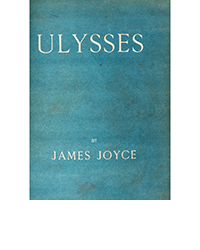
![<b>Forum, Jan. 29:</b> Powell (Anthony). [<i>A Dance to the Music of Time</i>], 12 vol., first editions, each with a signed presentation inscription from the author to Osbert Lancaster, 1951-75. £6,000-8,000 <b>Forum, Jan. 29:</b> Powell (Anthony). [<i>A Dance to the Music of Time</i>], 12 vol., first editions, each with a signed presentation inscription from the author to Osbert Lancaster, 1951-75. £6,000-8,000](https://ae-files.s3.amazonaws.com/AdvertisementPhotos/b7fdee12-4803-4d32-9330-a5729091cb92.png)

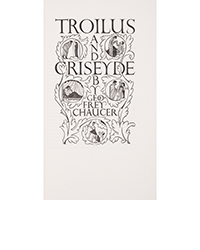
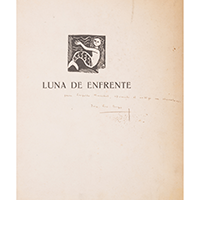
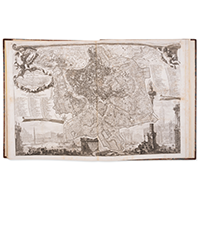



![<b>Forum, Jan. 29:</b> Herschel (Sir John F. W.) Collection of 69 offprints, extracts and separate publications by Herschel, bound for his son, William James Herschel, 3 vol., [1813-50]. £15,000-20,000 <b>Forum, Jan. 29:</b> Herschel (Sir John F. W.) Collection of 69 offprints, extracts and separate publications by Herschel, bound for his son, William James Herschel, 3 vol., [1813-50]. £15,000-20,000](https://ae-files.s3.amazonaws.com/AdvertisementPhotos/a06cc0dd-7619-45e9-b155-5ad75ed7b2e5.png)
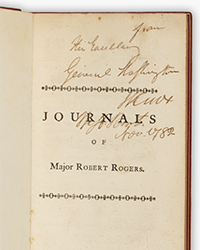
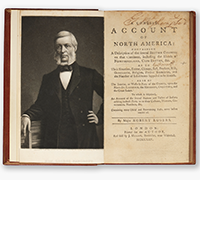
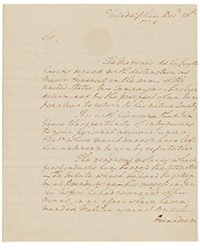

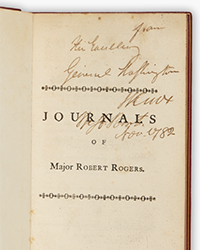

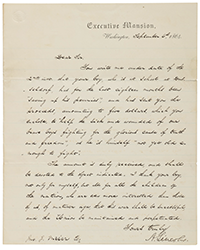
![<b>Sotheby’s, Jan. 27:</b> [World War II]. An archive of maps and files documenting the allied campaign in Europe, from the early stages of planning for D-Day and Operation Overlord, to Germany’s surrender. $200,000 to $300,000. <b>Sotheby’s, Jan. 27:</b> [World War II]. An archive of maps and files documenting the allied campaign in Europe, from the early stages of planning for D-Day and Operation Overlord, to Germany’s surrender. $200,000 to $300,000.](https://ae-files.s3.amazonaws.com/AdvertisementPhotos/9d2762bc-9f26-47ef-96de-1c28070e19f6.png)